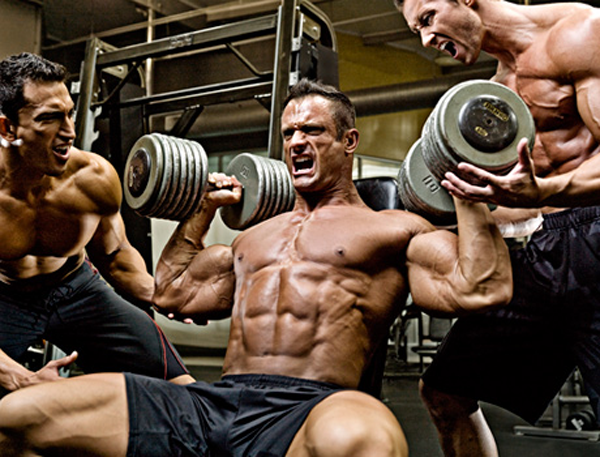“Everybody want to build bigger muscles – but don’t nobody want to lift no heavy-@$$ weight!” It’s not exactly the best grammatical example one can find why there aren’t a lot more muscle bound giants in most gyms in America. But 8-time Mr. Olympia winner Ronnie Coleman’s down-south drawled message is, for the most part, accurate. The gym is filled with people that want to build huge muscles. But how many of them, on a four times weekly basis, are willing to move the insane amount of iron required to transform a 160 pound bookworm into a 220-pound brick wall? Judging by the ratio of skinny twerps to muscle men in today’s gyms, and society in general, it appears the answer is quite obvious. Not a lot of people like to lift that heavy, heavy weight that is indeed required in order to build bigger muscles. Let’s examine how heavy weight training should be safely implemented for each of the major muscle groups of the body.
To build bigger muscles for the chest, one should stick with free weights, all the way. Actually, most of the heavy lifting you will do, will involve the use of free weights. Machines deliver some stressful resistance, but the lack of balance requirements mean your stabilizer muscles that control the ascent and descent of the weight won’t be called into play. This is why you will see top bodybuilders using plenty of incline bench press, and very rarely using the incline machine press. It just recruits far fewer muscle fibers. Flat and incline pressing with dumbbells and barbells work best for chest.
Building up the back muscles using heavy weights can be dangerous. Deadlifts are effective for packing slabs of meet onto the back and legs, but can lead to injury of the spinal discs. Always use a back brace on any back movement where the heavy weight requires your repetition range to be less than 8. In other words, if your rowing movement weight used is so light that you can complete 12 repetitions, you probably don’t need a back brace for protection. On the other hand, if you can knock out 4 repetitions before collapse, there’s a good chance the weight is so heavy that – while incredibly effective for adding muscles mass to your body and to build bigger muscles – it’s just not safe. Use a back brace in these instances.
Leg day should involve a whole lot of weight, knee wraps, blood, sweat & tears! Squat, leg press, hack squat, and lunge until you can’t stand anymore – then wait 5 minutes and knock out 20 minutes of low-impact cardio. You want to add some slabs of beef to your thighs – this is how you do it!
Shoulders and arms days should follow the same pattern. Heavy biceps curls, skull crushers for triceps, and barbell and dumbbell presses are the keys to building up these muscle groups using heavy, heavy weight.
Lifting heavy is not enough, however. Be sure to eat heavy, sleep heavy, and supplement heavy – and then you will grow heavy as well!

